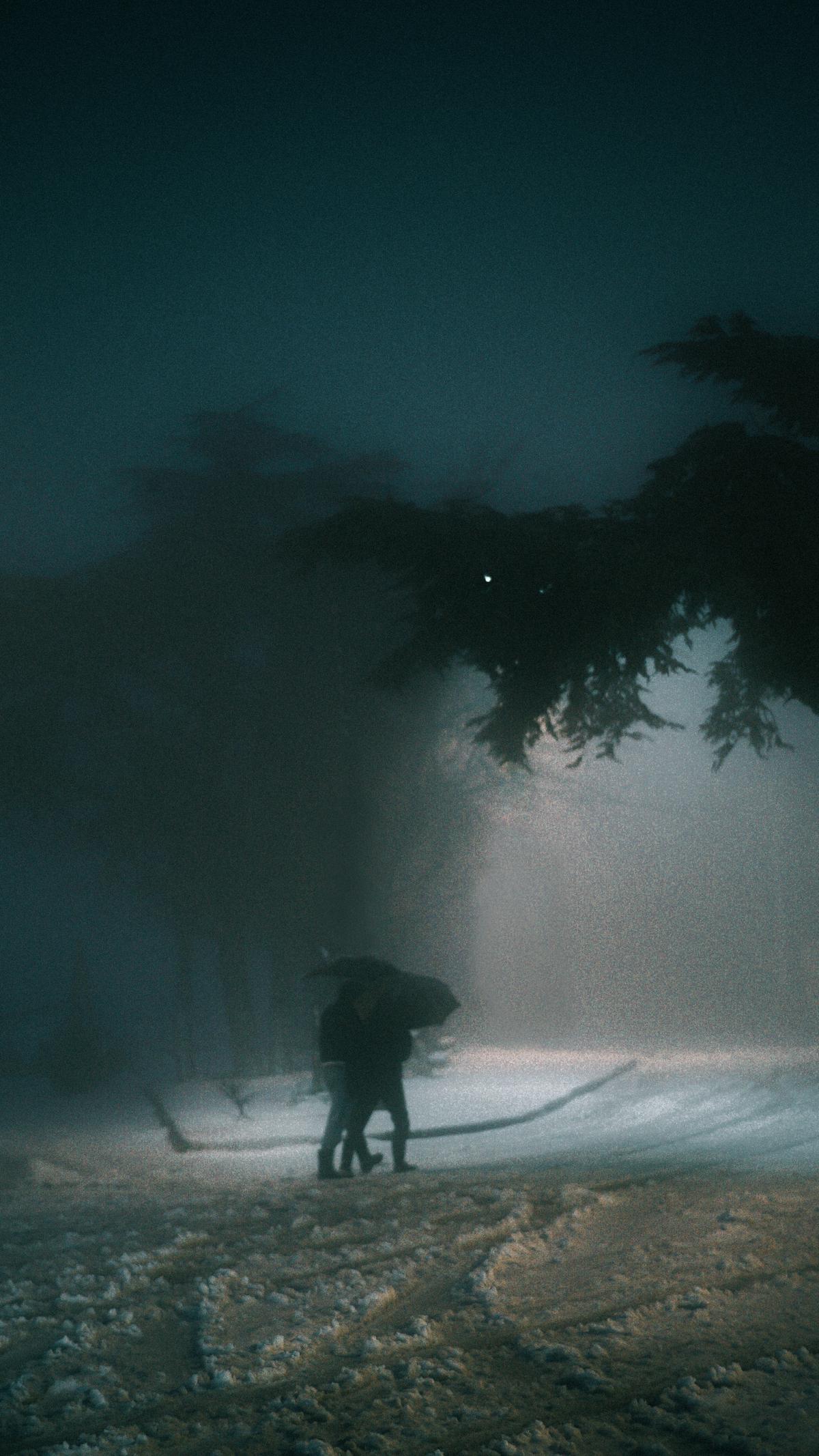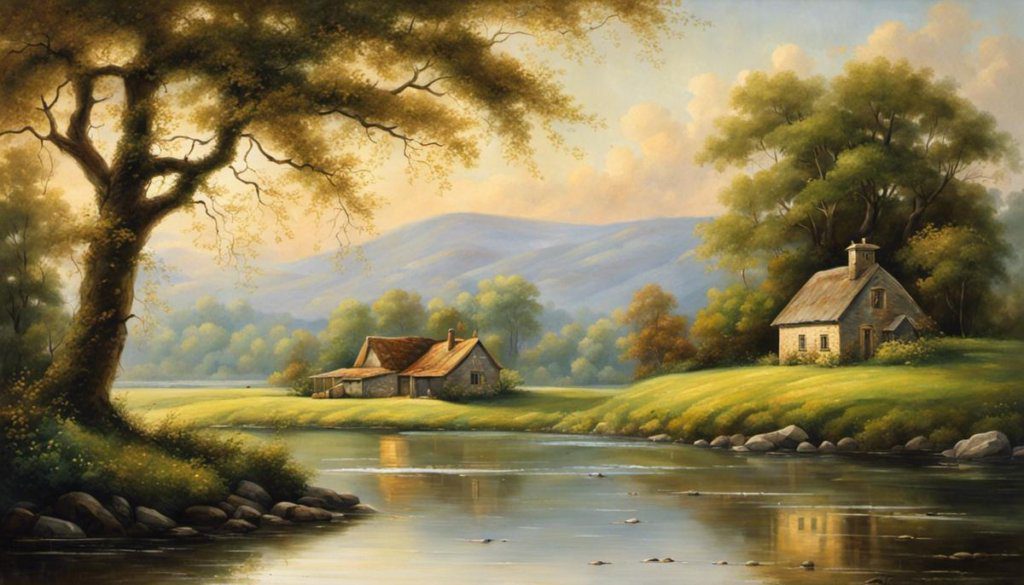Joseph Mallord William Turner, an eminent figure in the world of art, has significantly marked his impression through his astonishing landscapes. Commencing his artistic journey with raw talent, he astoundingly grew, resonating his vigorous expression on the canvas. Notably, his early landscapes signify the inception of his extraordinary vision, depicting picturesque sceneries with an exceptional blend of colours. As Turner’s work progressed, the influence of Romanticism began to permeate his art, manifesting itself in the dramatic skylines and turbulent seascapes that would become his signature. Moving through Turner’s celebrated works, one can witness not only the grandeur of his artistic skill but also the profound impact that his work has made on the paradigm of art across generations.
Turner’s Early Landscapes
Early Landscapes
Joseph Mallord William Turner, known as J.M.W. Turner, began his artistic career at a young age with topographical watercolours before proceeding onto oil landscapes. Equipped with a keen eye for the minutest beauty of nature, the hallmark of Turner’s early landscapes was their sharp, meticulous treatment. Each leaf, bough and patch of grass seemingly possessed a life of its own, jointly culminating into a spectacularly vivid depiction of nature.
Stylistic Choices
Turner’s inclination to imagine, rather than describe landscapes was apparent even at the outset of his career. His stylistic choices were unconventional for the period. Turner did not restrict himself to realistic depictions but instead sought to elicit emotional responses through his work. He frequently used dramatic light and colour effects, underlining his understanding of the sublime and beautiful. Moreover, Turner often positioned the sun in the centre of his works, engendering a radiant diffusion of light, a feature that would become increasingly dominant in his mature paintings.
Selection of Locations
Turner’s early landscapes were a tour de force of the enchanting countrysides of Wales and England. He was particularly fascinated with the architectural ruins, seaports, and hills of these regions. Locations such as the Lake District, Yorkshire, Welsh and Scottish vistas formed the backdrop of his initial works. Turner also drew inspiration from his travels to Europe, notably translating his impressions of the Venetian lagoon and Roman ruins into enthralling paintings.
Context Within Turner’s Oeuvre
The early landscapes of Turner set the groundwork for later experimental works, such as his ‘colour beginnings’ – small, unpolished watercolours that captured the essence of light and colour in a scene. Turner’s early landscapes were integral to his growth as an artist, demonstrated by the skill and originality with which they were executed. They typify his youthful vigour and his initial efforts at exploring the potential of landscapes, each work revealing his transition from a conventional topographical artist to a visionary painter of the sublime. Turner’s early landscapes should not be seen as immature or crude; they are instead the seeds from which his unique, ground-breaking style began to grow.
Influence of Turner’s Landscapes
Turner’s early landscapes played a significant role in shaping the course of British landscape painting. His innovative portrayal of common scenes, infused with intense dramatic effect, impressed his contemporaries and significantly influenced future artists. His early work represented a new stylistic approach, which respected tradition while also pushing its boundaries. Whether in his enthusiasm for architectural ruins or his perceptibility to atmospheric nuances, Turner’s early landscapes reflect the concept of Nature commanding and containing within itself a power of transformation. This respect for natural forces indelibly marked his landscape art, underpinning his status as one of the greatest practitioners of British landscape painting.
The Profound Impact of Turner’s Landscapes
Turner’s devotion to capturing the awe-inspiring beauty of nature has left a deep and enduring mark on the world of art. His early landscapes, with their potent blend of sensitivity to nature’s aesthetics and radical departure from artistic conventions, were instrumental in propelling the shift from Romanticism to the fledgling arena of Impressionism. Even nearly two centuries after his passing, his work continues to inspire generations of artists and captivate vast audiences.

Influence of Romanticism on Turner’s Landscapes
Turner’s Landscapes and their Connection to the Romantic Movement
In the dawn of the 19th Century, the wave of Romanticism swept across Europe influencing multiple artistic disciplines, from music and literature to the visual arts. In the realm of landscape art, this movement found expression in the works of pioneers like William Turner. Known for his breathtakingly imaginative and dramatic interpretations of nature, Turner’s landscapes are punctuated with quintessentially Romantic themes.
Distinguished by vibrant colours and stark juxtapositions between light and shadow, Turner’s art stands apart from the meticulous, polished style of his contemporaries. His landscapes, therefore, are seen as the epitome of the Romantic visual narrative.
Turner’s Romantic Realism
Although Turner was primarily influenced by the Romantic movement, his style cannot be confined strictly within this classification. He cleverly fused elements of Romanticism and Realism, creating a distinguishing artistic identity. Many of his landscapes possess a raw rendering of nature’s brutality, transcending the typical idealised representation of the Romantic period.
This can be seen in Turner’s seminal artwork, “Rain, Steam, and Speed – The Great Western Railway”. In this piece, Turner captures the quintessential power and beauty of the industrial era, presenting a snowstorm raging around a train. His brushwork deviates from precision, replaced by hazy strokes, which creates an impression of physicality and motion. This amalgamation of Romantic essence and realistic depiction makes his work stand out amongst others.
Turner and Capturing The Sublime
Turner’s landscapes are also deeply influenced by his fascination for the ‘Sublime’ – an idea which was widely embraced during the Romantic period. Unlike the traditional ideals of beauty, the Sublime evokes feelings of awe, terror, and the overwhelming power of nature.
Apt example can be found in one of his most celebrated works, “The Slave Ship”. Turner depicts a ship driving through a tempestuous sea, the waters alive with the lurid colours of a sunset and churned by the ship’s relentless progression. In this chilling scene, Turner demonstrates the Sublime’s brutal strength and indifference to human suffering, encapsulating the Romantic era’s capacity for both beauty and terror.
Further, “Snow Storm – Steam-Boat off a Harbour’s Mouth” also echoes Turner’s fascination with the Sublime. He masterfully portrays a steam-boat struggling against a ferocious snowstorm, the vessel appearing insignificant against the wave’s immense power. This work presents a sense of terror and awe emerging from nature’s frightful dominance.
Turner’s Study of Nature
In addition to the Sublime, Turner’s landscapes also emphasise a close study of nature. Unlike other Romantic artists who heavily employed symbolism, Turner chose a more direct representation of natural phenomenon.
In “The Burning of the Houses of Lords and Commons”, Turner explores fire’s destructive power. The painting is almost entirely filled with colossal flames and billowing smoke, portraying the fire’s untamed energy and apparent life-force. His depiction of these natural elements as an invincible force reveals his Romantic inclination towards the grandeur and splendour of nature.
A Journey Through Turner’s Landscapes: Echoes of the Romantic Era
Capturing both the volatile and serene moods of nature, J.M.W Turner’s (Joseph Mallord William Turner) artistry distinctly underscores the contrasting elements of the Romantic era and Realism. His robust fascination with intense natural occurrences provides a vivid tone to his works, solidifying his imprint amid his contemporaries. Through his vast array of landscapes, Turner has considerably encapsulated the vibrant spirit that embodies the Romantic period.

Major Landscapes and Their Significance
Dissecting Turner’s Mastery: A Study of His Signature Style and Revered Landscapes
The remarkable quality of Turner’s artistry lies within his profound manipulation of light, his innovative use of colour, and an unrivalled ability to realign the viewer’s understanding of atmospheric effects. Turner’s meticulous eye for detail elevated his reputation among English Romantic painters, earning accolades for his dramatic and lifelike depictions of landscapes and seascapes. His most distinguished works, such as ‘The Fighting Temeraire’ (1839), ‘Rain, Steam and Speed – The Great Western Railway’ (1844) and ‘Snow Storm: Steam-Boat off a Harbour’s Mouth’ (1842), are powerful reflections of his talent and innovation.
‘The Fighting Temeraire,’ delivers a stirring narrative of change and transition. The veteran warship, depicted being towed towards its demise, is illuminated by a setting sun – a metaphorical end to an era. The poignant scene, underscored by Turner’s genius use of light and colour, beautifully embodies the concept of the Sublime. This aesthetic principle, held in high regard by the Romantics, focuses on invoking feelings of awe and terror, in part by communicating a sense of the overwhelming scale of nature.
Artistic Significance of Turner’s Landscapes
Turner has been described as the ‘painter of light’, and his approach to capturing this element in his work was revolutionary. He painted natural phenomena in a manner that was unprecedented and used innovative techniques to portray light accurately. His ‘Rain, Steam and Speed – The Great Western Railway’ is a prime example, where the blurred impression of the locomotive speeding into the distance presents a stunning emulation of speed and motion.
Turner’s landscapes were significant not only for their aesthetic appeal but also for their thematic depth. He often depicted scenes of the Industrial Revolution, like in ‘Snow Storm: Steam-Boat off a Harbour’s Mouth’, a painting of a stormy sea scape with a steam boat in trouble, successfully marrying nature’s wild, untamed force with mankind’s scientific progress.
Historical and Societal Context of Turner’s Landscapes
It’s crucial to consider the relatable historical timeframe in which Turner lived and worked. The late 18th and early 19th century was a time of drastic transformations in Britain – the Industrial Revolution was altering the landscape and influencing society’s outlook, bringing about material progress and challenges. Turner engaged with these changes in his paintings, exemplifying the coexistence of the old world and the new. His affinity for depicting steam and smoke from trains and steamboats while maintaining elements of the sublime natural world encapsulated the paradoxical essence of his era.
Turner’s Indelible Imprint on Landscape Art
The landscapes rendered by J.M.W. Turner, a prominent figure in Romanticism, have carved a significant niche in shaping the subsequent trajectory of landscape painting and Impressionism. Unfurling the genius of an artist, his work served as a cornerstone, paving the way for the evolution of ground-breaking art movements such as Impressionism and Abstract Expressionism in the late 19th century. His innovative approach to colour and his deep dive into natural elements position him as a pioneer who was far ahead of his era. His influence extends far beyond his lifetime, with Turner’s contributions being celebrated till date through the annual Turner Prize awarded to exceptional British visual artists.

Turner’s Later Landscapes and Modern Influence
The Evolution of Turner’s Landscaping Style
Traverse across the artistic journey of J.M.W Turner, and you sense a clear shift in his depiction of landscapes. Initially inclined towards detailed and realistic portrayals, he gradually embraced a more fluid and dramatic representation of nature’s grandeur. His quest to capture the sublime beauty and intimidating scale of nature ushered in a new era in his works.
This transition manifests itself more evidently in his later landscapes, where the power and subtlety of atmospheric phenomena take centre stage – tumultuous seas, ethereal skies, fiery sunsets, and menacing storms. His brush strokes grew more confident, his palette more luminous. His masterpiece, “Rain, Steam and Speed – The Great Western Railway”, is a testament to this evolution. More than just art, it is a brazen acceptance of the tumult of industrialisation storming across a traditional landscape.
Adding another feather to his cap is “The Fighting Temeraire”, a masterstroke from his latter years. In this sublime portrayal, Turner gracefully dovetails the accurate detailing of a ship with a luminous backdrop of a setting sun. The canvas captures the poignant transition from old to new, encapsulating not just the sadness of change but also its relentless march.
Turner’s Landscapes: Influence on Modern Art
Modern artists have been remarkably inspired by Turner, incorporating elements from Turner’s landscapes into their own works. His innovative exploration of light and colour, his nebulous depiction of natural forces and his pioneering work in expressive and atmospheric landscapes have laid the foundations for modern artistic movements like Impressionism and Abstract Expressionism.
Impressionist artists like Monet have substantially benefited from Turner’s attention to capturing fleeting moments of light in their natural settings. Turner’s interest in achieving dramatic atmospheric effects also paved the way for the exploration of emotional expressiveness in modern art. Expressionists such as Mark Rothko drew inspiration from Turner’s technique of using colour and light to evoke emotions, demonstrating a conceptual leap from landscapes as a mere aesthetic endeavour to a more profound emotional expression.
Turner’s landscapes, particularly his later works, have continued to engage and inspire even contemporary artists. His dedication to capturing the spirit of nature and his innovative handling of colour, light and atmosphere have led him to be hailed as a precursor to modern art, linking the classical traditions of the past to the revolutionary ideas of the future. Modern landscape artists keep returning to Turner’s approach, stylistic influence and his grand themes, ensuring ongoing relevancy and continued exploration of Turner’s vision in modern art.
Whether it’s the phenomenal depth in his depiction of natural forces or his ground-breaking use of colour and light, Turner’s later landscapes have influenced generations of artists. Providing a bridge from the past to the present, these works continue to resonate in the landscape art that is being created today.

Photo by mehdi_i9_ on Unsplash
Emerging from Turner’s life and works, we can unequivocally grasp the profound depth of his influence on the realm of art, especially that of landscape painting. His latter works evidence the revolutionary shift in his stylistic approach — a transition that arguably laid the groundwork for future art movements, notably Impressionism. Studying his exceptional works, intertwining the threads of romanticism and realism, concurrently with his evolution as an artist gives remarkable insight into his virtuosity. The enduring influence of Turner resonates in the works of modern landscape artists, constructing a continual dialogue between his epoch and our own, creating a timeless legacy that is inevitably Turner.
Recommend0 recommendationsPublished in Art History







Responses